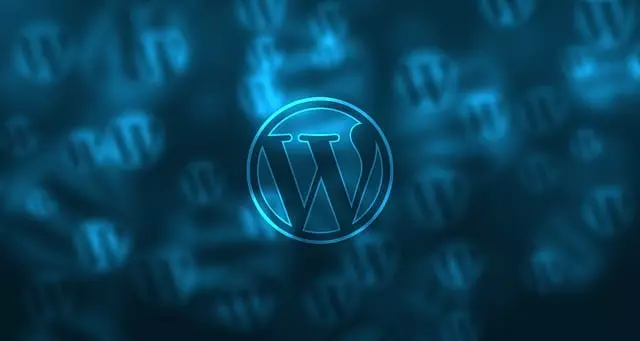To ensure the success and security of e-commerce WordPress sites, it's imperative to maintain up-to-date WordPress themes, especially those with responsive designs that adapt to various devices, for an optimal user experience. Regular updates to themes, plugins, and PHP code are essential to uphold security, functionality, and compliance with web standards. A well-maintained theme not only aligns with best practices in web development but also enhances user engagement by providing a seamless experience across all platforms. For e-commerce sites, performance directly impacts conversion rates and customer satisfaction. It's crucial to conduct routine maintenance checks, including testing for conflicts with plugins and WordPress core updates, to maintain smooth operations. Commitment to these practices not only safeguards your investment but also ensures a professional appearance and consistent experience for users, thus optimizing the performance of e-commerce WordPress sites. Regular content updates keep the site dynamic and engaging, signaling to search engines that it's active and relevant, which can improve visibility and ranking. Additionally, employing responsive image plugins, integrating a CDN, and utilizing caching mechanisms are recommended to enhance site speed and performance, which is critical for user retention and minimizing bounce rates. Proactive strategies like regular backups, monitoring performance across devices, and integrating dedicated security plugins are key to protecting against data loss, downtime, and cyber threats. Selecting a lightweight, high-performing WordPress theme that receives regular updates sets the foundation for improved responsiveness and faster page load times. These practices, combined with fresh content updates and diligent plugin and core management, contribute to a secure, efficient e-commerce platform that maintains user trust and loyalty in the online marketplace.
WordPress sites are dynamic platforms that serve as cornerstones for businesses and personal brands online. Ensuring these sites function at their peak is not just about aesthetics or initial setup; it’s an ongoing commitment to performance, security, and content relevance. This article delves into the critical aspects of WordPress website maintenance, emphasizing the necessity of regular upkeep for themes, particularly responsive designs, and the smooth operation of e-commerce functionalities. We’ll explore practical strategies to enhance your site’s defense mechanisms against digital threats and provide insights on optimizing speed and efficiency. With a focus on content updates and plugin management, your WordPress site can thrive in an increasingly competitive online landscape.
- Understanding the Importance of Regular Maintenance for WordPress Themes
- Best Practices for Keeping Responsive WordPress Designs Optimized
- Strategies for Ensuring E-commerce WordPress Sites Operate Smoothly
- Essential Security Measures to Protect Your WordPress Site
- Performance Optimization: Speeding Up Your WordPress Site
- Regular Content Updates and Plugin Management for a Thriving WordPress Site
Understanding the Importance of Regular Maintenance for WordPress Themes

Regular maintenance of WordPress themes is a cornerstone for ensuring that e-commerce WordPress sites and those with responsive designs function optimally and securely. A well-maintained theme not only aligns with best practices in web development but also contributes to an enhanced user experience. The dynamic nature of the internet necessitates that WordPress themes are kept up-to-date; this includes updating theme files, plugins, and PHP code to the latest versions to mitigate potential security vulnerabilities and ensure compatibility with new web standards.
For e-commerce WordPress sites, particularly those utilizing responsive designs, maintaining themes is imperative for performance and functionality across various devices and screen sizes. An outdated theme can lead to slow loading times, which can directly impact conversion rates and customer satisfaction. Moreover, as search engines prioritize mobile-friendly websites, maintaining a responsive theme ensures that your site remains accessible and visible to users on all platforms. Regular checks for theme conflicts with plugins and WordPress core updates are also crucial to prevent disruptions in the seamless operation of online stores. By committing to regular maintenance, website owners can safeguard their investment in e-commerce WordPress sites and ensure a professional and consistent user experience.
Best Practices for Keeping Responsive WordPress Designs Optimized

Maintaining a responsive WordPress design is pivotal for ensuring that your website functions seamlessly across various devices and screen sizes, particularly as e-commerce WordPress sites often rely on a fluid user experience to drive conversions. To keep your responsive WordPress design optimized, it’s essential to regularly update your WordPress themes to the latest versions. These updates often include improvements to layouts and styles that enhance performance and accessibility. Additionally, test your website’s responsiveness by using tools that simulate different devices. This will help you identify any potential issues that could arise from varying screen resolutions or orientations.
For e-commerce WordPress sites, a responsive design is not just a feature but a fundamental aspect of user retention and sales conversion. Incorporating a mobile-first approach can significantly improve the shopping experience for users on the go. Beyond updating themes, consider utilizing responsive image plugins that automatically adjust the image sizes to match the viewer’s screen. This optimization technique not only improves page load times but also ensures that your website’s visual appeal remains consistent. Furthermore, employing a content delivery network (CDN) can further enhance site speed and performance, which is crucial for retaining visitors and reducing bounce rates. Regularly reviewing the site on multiple devices and browsers will provide insights into areas that may require adjustments to maintain optimal functionality and design coherence.
Strategies for Ensuring E-commerce WordPress Sites Operate Smoothly

To maintain a smooth operation for e-commerce WordPress sites, it’s crucial to implement robust strategies that cater to the dynamic nature of online commerce. Utilizing responsive WordPress design themes is a pivotal step in this process. These themes ensure that your site is accessible and visually appealing across various devices, from desktops to smartphones, thereby providing a seamless shopping experience for customers. This adaptability not only enhances user engagement but also positively impacts search engine rankings, as Google and other search engines favor mobile-friendly websites.
Furthermore, regular updates of both the WordPress core and installed plugins are non-negotiable for security and functionality. E-commerce WordPress sites, in particular, often rely on specialized plugins for payment processing, inventory management, and customer relationship management. These components must be kept up to date to safeguard against vulnerabilities that could compromise sensitive transaction data. Additionally, regular backups and performance monitoring can prevent data loss and downtime, ensuring a resilient e-commerce platform that operates efficiently, even during high-traffic events. Regularly reviewing and optimizing your server settings and WordPress hosting environment can further enhance the site’s performance, contributing to a more robust and secure online store.
Essential Security Measures to Protect Your WordPress Site

Regularly updating your WordPress core, themes, and plugins is a cornerstone of WordPress website maintenance for security purposes. Hackers often exploit vulnerabilities in outdated software, so keeping everything up-to-date is crucial to protect your site from unauthorized access and malware infections. Additionally, using secure WordPress themes that are well-coded and maintained by reputable developers can significantly reduce the risk of security breaches. For E-commerce WordPress sites, ensure that any theme or plugin used for handling transactions is compliant with industry security standards such as PCI DSS (Payment Card Industry Data Security Standard). Employing SSL certificates to encrypt data transmission and securing sensitive user information is also a critical step in protecting your e-commerce site.
In the context of responsive WordPress design, it’s not just about aesthetics or mobile compatibility; it’s also a security consideration. A responsive design that adapts smoothly to different screen sizes can help deter attacks by avoiding the use of outdated browsers and technologies. Attackers often target these vulnerabilities, so encouraging users to access your site through up-to-date browsers can enhance overall security. Furthermore, regularly backing up your website’s data and ensuring that you have a recovery plan in place are proactive measures that can mitigate the impact of potential security breaches. For robust protection, consider implementing security plugins like Wordfence or Sucuri, which offer real-time monitoring, firewall services, and malware scanning tailored for WordPress environments. These tools can provide an additional layer of defense against potential threats to your WordPress site.
Performance Optimization: Speeding Up Your WordPress Site

To ensure that your WordPress site performs optimally and provides a seamless user experience, especially for responsive WordPress design and e-commerce WordPress sites, performance optimization is key. One of the first steps in this process involves selecting a lightweight, well-coded WordPress theme. These themes are designed to be fast and efficient, minimizing the resources required to load and display your site’s content without sacrificing aesthetics or functionality. By choosing a theme that adheres to modern web standards and is regularly updated for compatibility with the latest PHP and browser technologies, you can significantly reduce page load times and improve the overall responsiveness of your site on various devices.
In addition to selecting an appropriate theme, there are several other strategies to enhance the speed and performance of your WordPress website. Utilizing caching solutions, such as WP Super Cache or W3 Total Cache, can store static versions of your pages, which speeds up their delivery to users. Optimizing images before uploading them to your site by compressing file sizes without losing quality is another effective method to improve load times. Furthermore, leveraging Content Delivery Networks (CDNs) can distribute your content across multiple servers globally, ensuring faster access for users regardless of their geographic location. For e-commerce WordPress sites, it’s crucial to streamline checkout processes and minimize scripts that could slow down transactions. Regularly updating plugins and the core WordPress software to the latest versions also plays a role in maintaining peak performance by addressing security vulnerabilities and performance bottlenecks. Implementing these optimization strategies not only enhances user experience but also contributes positively to search engine rankings, as faster sites are favored by algorithms like Google’s PageSpeed Insights.
Regular Content Updates and Plugin Management for a Thriving WordPress Site

Regular content updates play a pivotal role in maintaining a vibrant and engaging WordPress site. Fresh content not only keeps visitors returning but also signals search engines that your site is active and relevant, which can enhance your site’s visibility and ranking. For e-commerce WordPress sites, this is particularly crucial as new products, services, and blog posts can drive traffic and sales. Additionally, consistent updates to the site’s content ensure that the information remains accurate and useful to users. This includes not just textual content but also images, videos, and other media that contribute to a rich user experience.
In tandem with regular content updates, plugin management is an indispensable aspect of WordPress website maintenance. WordPress themes and plugins are frequently updated to improve functionality, address security vulnerabilities, and introduce new features. A responsive WordPress design is essential for providing an optimal viewing experience across various devices, and plugins often facilitate this adaptability. It’s imperative to keep these tools up-to-date to safeguard the site from potential security threats and to leverage the latest improvements for a seamless user experience. E-commerce WordPress sites, in particular, rely on plugins for payment processing, inventory management, and customer relationship management. By meticulously managing these plugins, ensuring compatibility with the latest WordPress version and other installed components, site owners can ensure their e-commerce platform operates efficiently and securely. Regularly reviewing and updating plugins not only streamlines site performance but also protects sensitive transactional data, which is critical for maintaining user trust and loyalty in an online marketplace.


